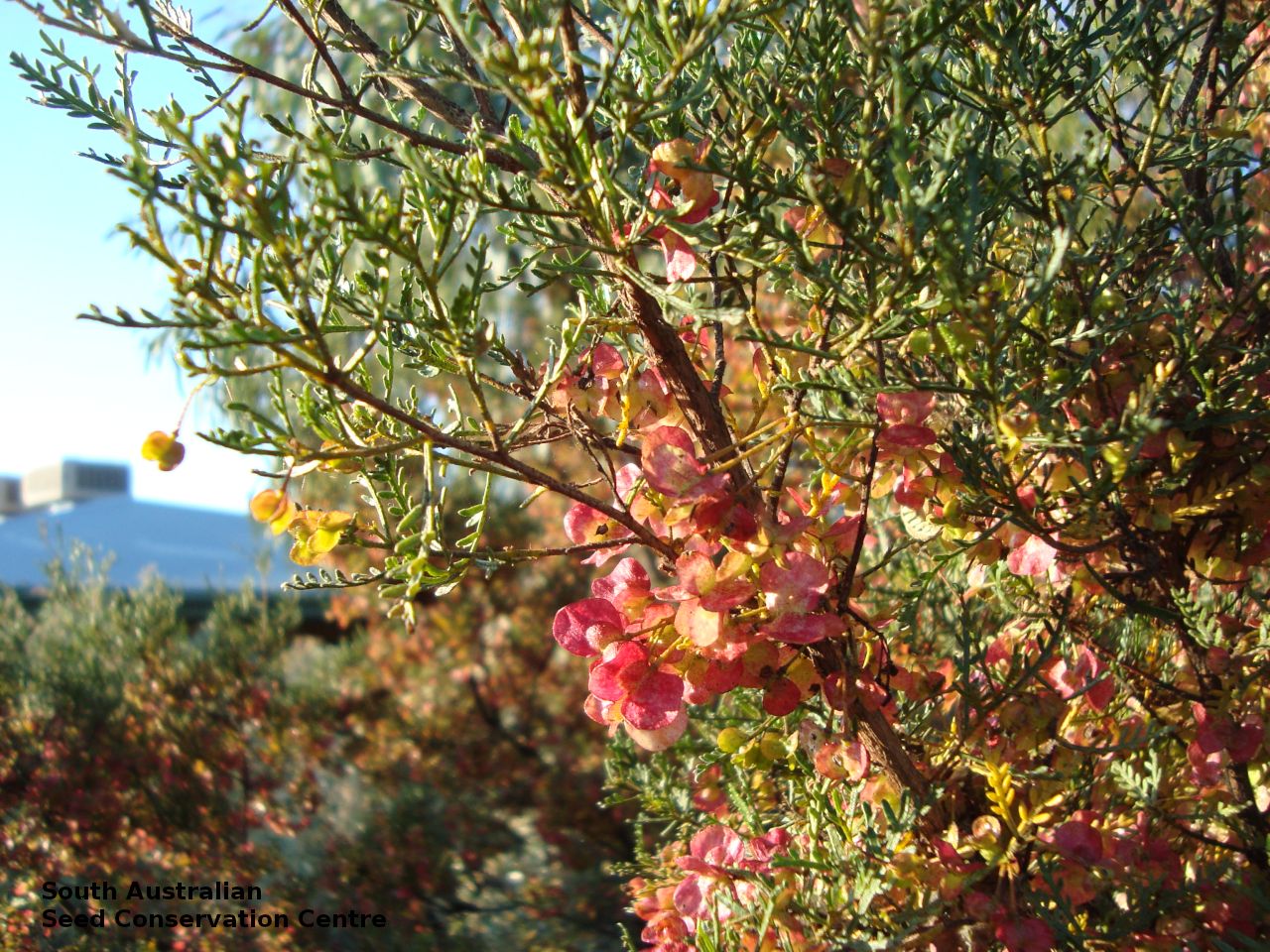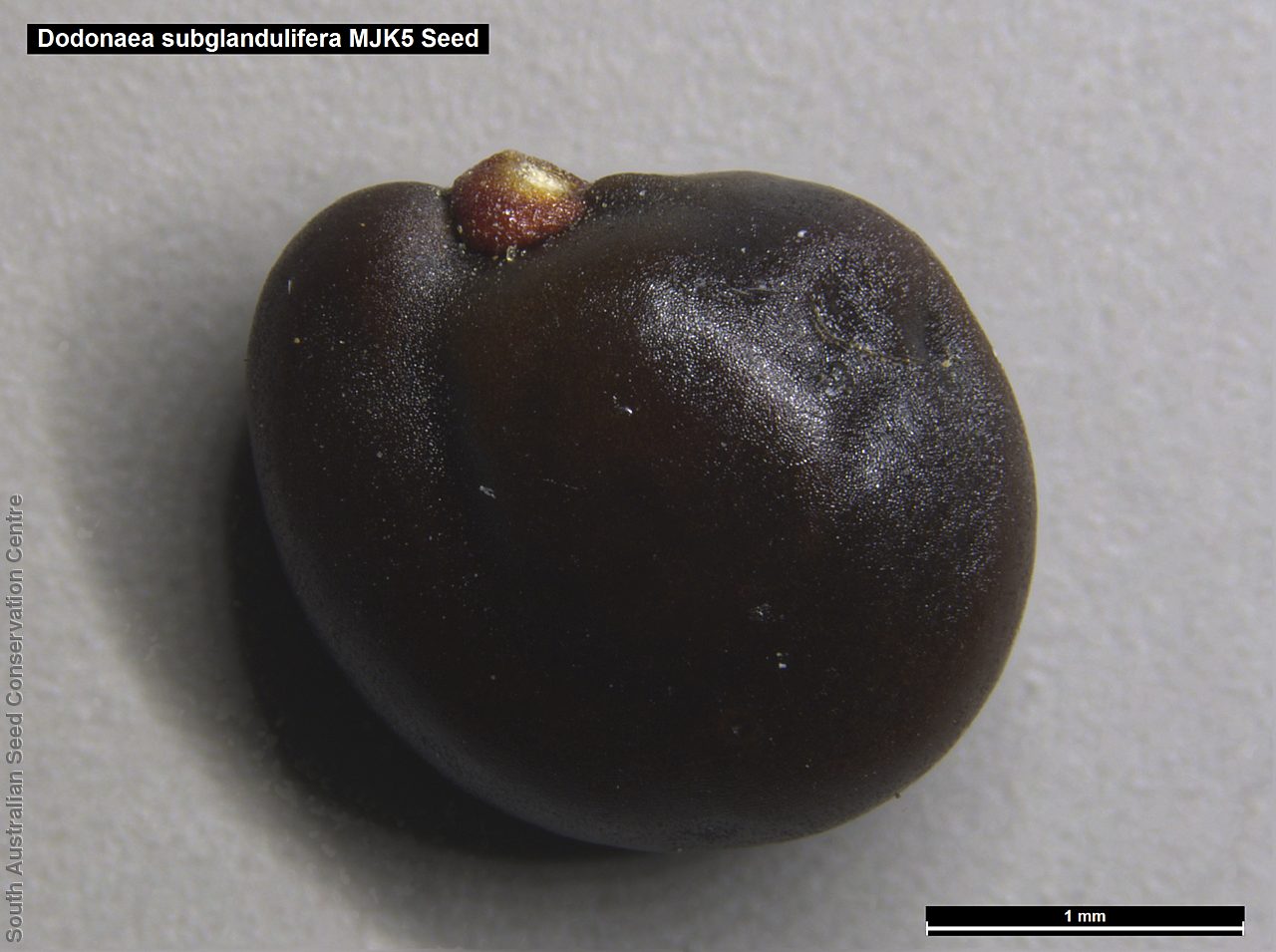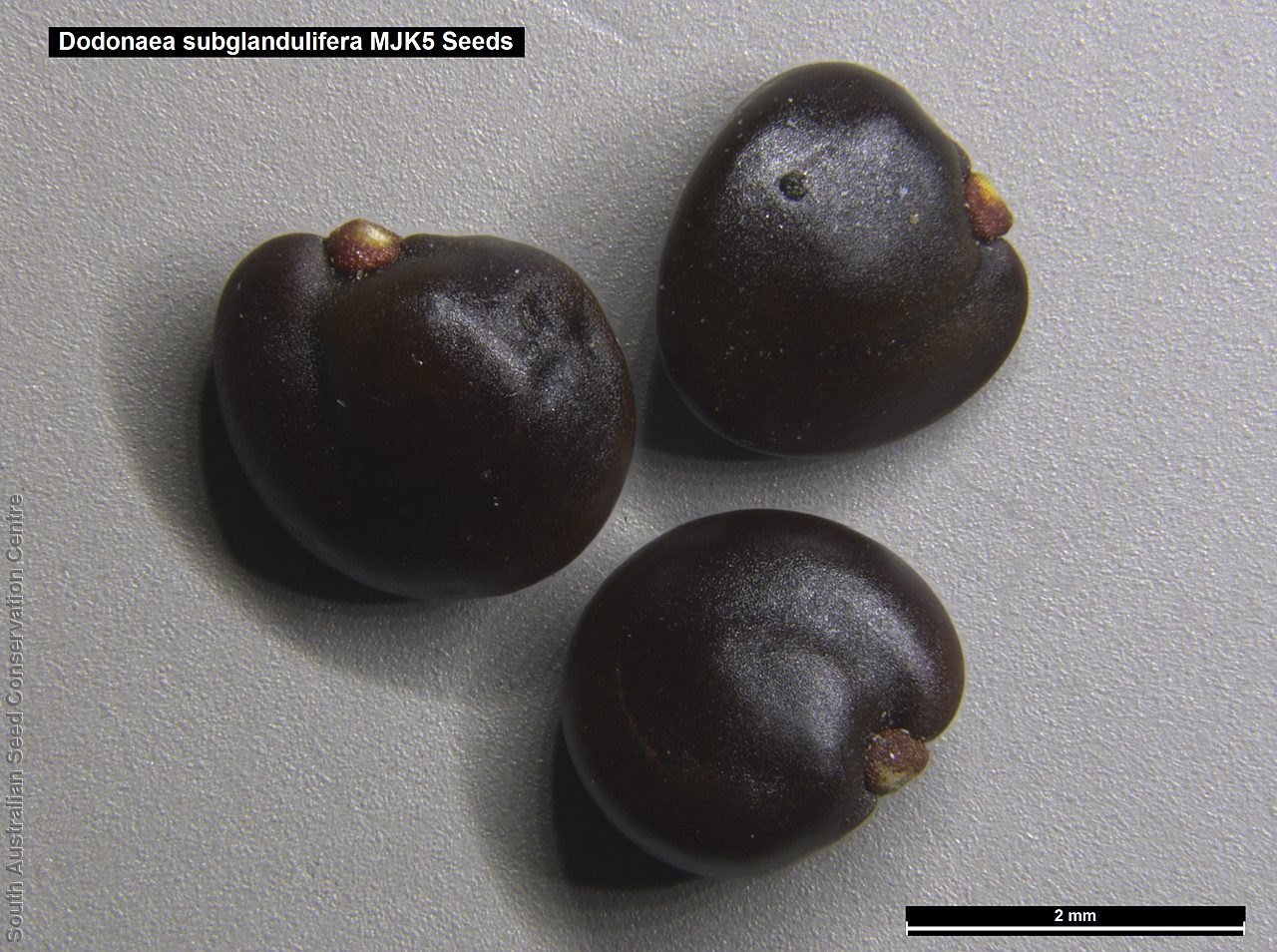




Botanical art
Prior names
Dodonaea adenophora var. ovata
Dodonaea tenuifolia
Dodonaea sp. B
Etymology
Dodonaea named after Rembert Dodoens (1517-1585), a Flemish physician and botanist, also known under his Latinized name Rembertus Dodonaeus. Subglandulifera from the Latin 'sub' meaning almost, below and 'glandulifera' means bearing small glands, alluding to the leaflets with glands on the lower surface only.
Distribution and status
Endemic to South Australia and found on the east side of the Mount Lofty Ranges and on Yorke Peninsula, growing on low hills on loamy soils associated with rocky outcrops in open woodland, open shrubland and mallee. Native. Very rare in South Australia
Herbarium regions: Flinders Ranges, Northern Lofty, Murray, Yorke Peninsula
NRM regions: Alinytjara Wilurara, Northern and Yorke, South Australian Murray-Darling Basin
AVH map: SA distribution map (external link)
Plant description
Dioecious perennial shrub to 2 m high. Leaves pinnate to 1.6 cm long; leaflets 9-17, linear, obtuse, entire, or very rarely with 1 or 2 teeth near the apex; to 7.5 mm long and 1.5 mm wid; viscous, with raised glands on the lower surface only. Flowers usually 2 or 3 together; axillary, small yellow-green flowers; sepals 3-4, stamens 6-8. Flowering between February and August. Fruits are red-brown three or four winged capsule to 7 long and 15 mm wide, sparsely pubescent; wings extending from the base to the apex of the capsule. Seeds are black ovoid seed to 3 mm long and 2 mm wide with a short brown aril. Seed embryo type is folded.
Seed collection and propagation
Collect seeds between September and December. Collect winged capsules that contain hard black seeds, usually when capsule is dry and dull red-brown. Place capsules in a tray and leave to dry for 1 to 2 weeks. Then rub the capsules by hand to dislodge the seeds. Use a sieve to separate the unwanted material. Store the seeds with a desiccant such as dried silica beads or dry rice, in an air tight container in a cool and dry place. From three collections, the seed viability was average to high, at 50% to 90%. This species has physiological dormancy that needs to be overcome for the seed to germinate (e.g. nicking the seed coat).
| Location | No. of seeds (weight grams) | Number of plants | Date collected | Collection number Collection location | Date stored | % Viability | Storage temperature |
|---|---|---|---|---|---|---|---|
| BGA MSB | 5,200 (31.46 g) 5,200 (31.46 g) | 122 | 25-Nov-2003 | MKJ5 Yorke Peninsula | 1-Sep-2004 | 60% | +5°C, -18°C |
| BGA | 1,350 (4.32 g) | 20+ | 28-Nov-2007 | KHB94 Northern Lofty | 19-Sep-2008 | 50% | +5°C, -18°C |
| BGA MSB | 10,700 (45.1 g) 10,700 (45.02 g) | 100+ | 29-Nov-2012 | DJD2594 Murray | 27-Feb-2014 | 90% | -18°C |
Number of plants: This is the number of plants from which the seeds were collected.
Collection location: The Herbarium of South Australia's region name.
% Viability: Percentage of filled healthy seeds determined by a cut test or x-ray.